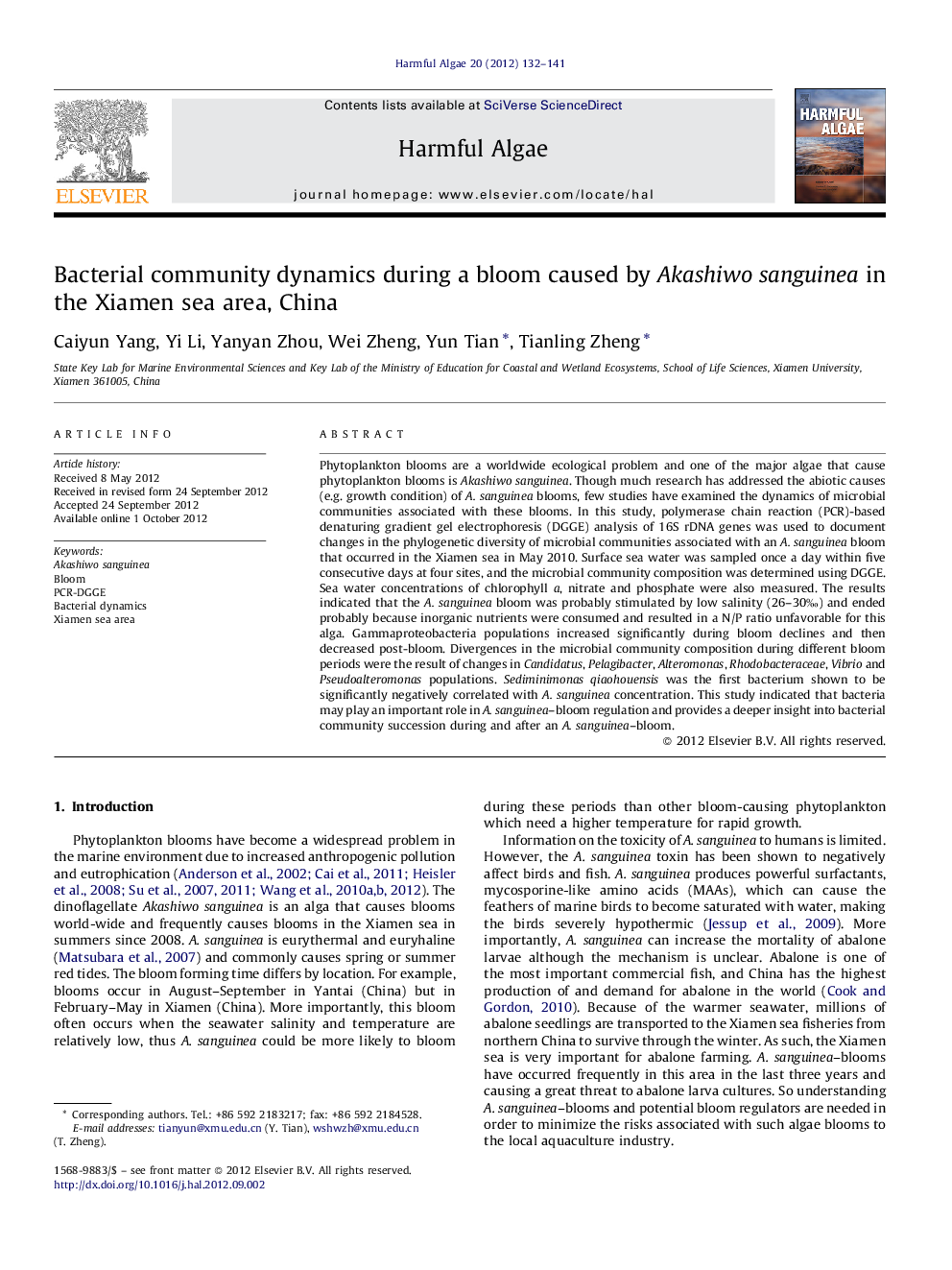| Article ID | Journal | Published Year | Pages | File Type |
|---|---|---|---|---|
| 6386304 | Harmful Algae | 2012 | 10 Pages |
Phytoplankton blooms are a worldwide ecological problem and one of the major algae that cause phytoplankton blooms is Akashiwo sanguinea. Though much research has addressed the abiotic causes (e.g. growth condition) of A. sanguinea blooms, few studies have examined the dynamics of microbial communities associated with these blooms. In this study, polymerase chain reaction (PCR)-based denaturing gradient gel electrophoresis (DGGE) analysis of 16S rDNA genes was used to document changes in the phylogenetic diversity of microbial communities associated with an A. sanguinea bloom that occurred in the Xiamen sea in May 2010. Surface sea water was sampled once a day within five consecutive days at four sites, and the microbial community composition was determined using DGGE. Sea water concentrations of chlorophyll a, nitrate and phosphate were also measured. The results indicated that the A. sanguinea bloom was probably stimulated by low salinity (26-30â°) and ended probably because inorganic nutrients were consumed and resulted in a N/P ratio unfavorable for this alga. Gammaproteobacteria populations increased significantly during bloom declines and then decreased post-bloom. Divergences in the microbial community composition during different bloom periods were the result of changes in Candidatus, Pelagibacter, Alteromonas, Rhodobacteraceae, Vibrio and Pseudoalteromonas populations. Sediminimonas qiaohouensis was the first bacterium shown to be significantly negatively correlated with A. sanguinea concentration. This study indicated that bacteria may play an important role in A. sanguinea-bloom regulation and provides a deeper insight into bacterial community succession during and after an A. sanguinea-bloom.
⺠Rarely studied HABs of Akashiwo sanguinea bloom was chosen in this study. ⺠The shifts of bacterial community structure, diversity and abundance were studied. ⺠A. sanguinea bloom can be stimulated by low salinity and ended for improper ratio of inorganic nutrients. ⺠We found the bacterial species which leading the bacterial response and regulation to A. sanguinea bloom. ⺠Sediminimonas qiaohouensis can be an algicidal microorganism to A. sanguinea.
